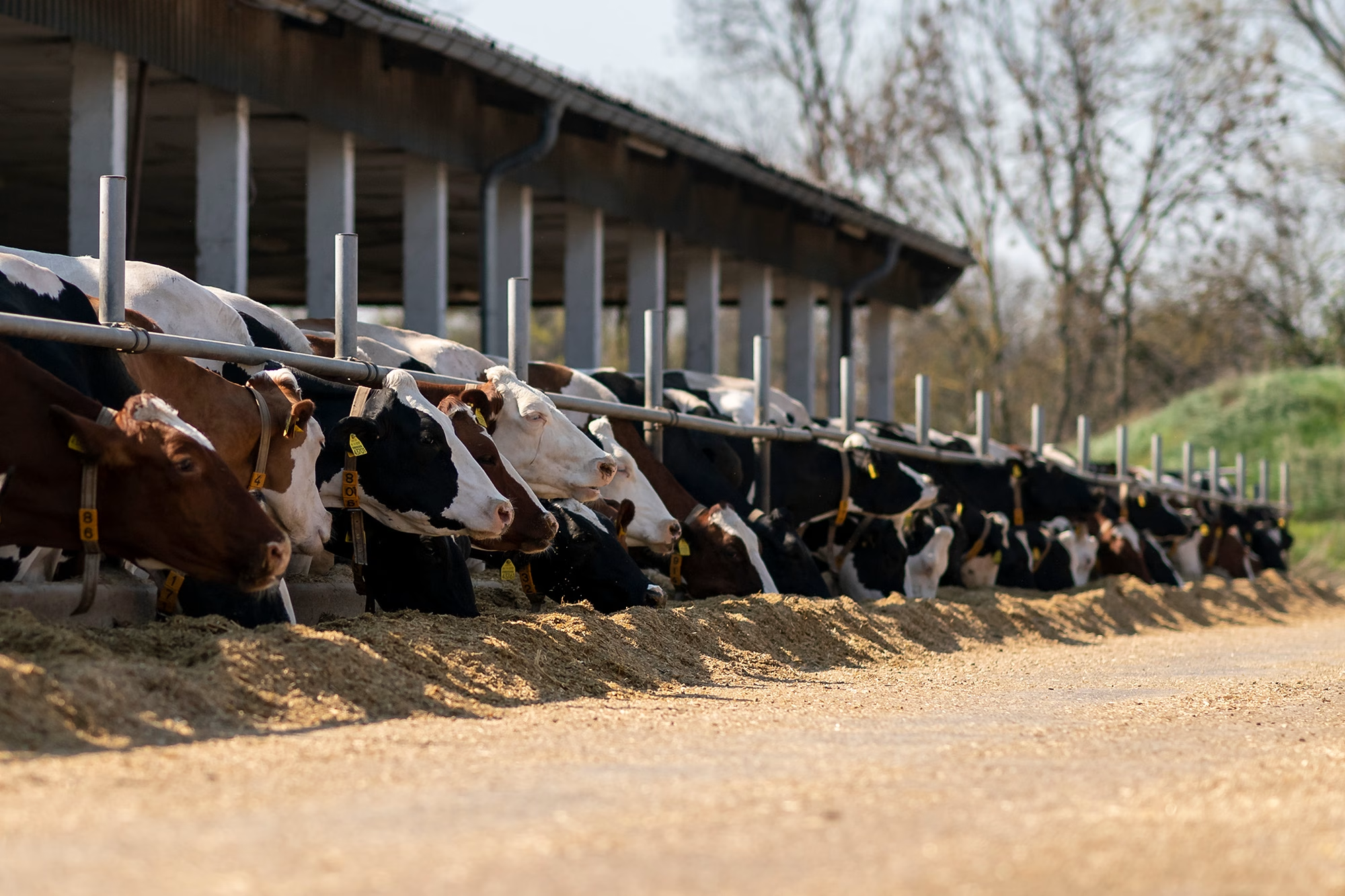Uncover the key difference between NO3 and No3 to optimize your dairy herd’s health and boost your farm’s productivity. Read on to learn more.
Summary: Understanding the key differences between NO3 and No3 is crucial for effective dairy farm management. Misinterpretations or typos can lead to high nitrate levels, posing serious health risks like nitrate poisoning for your cattle. Regular testing and vigilant management of nitrate levels in forage and water can prevent these dangers, ensuring a healthier and more productive farm environment. Nitrate (NO3) is an essential part of the nitrogen cycle and critical for plant nutrition. It helps create amino acids, which are necessary for protein growth. Effective nitrate control can boost plant health, improve crop nutrient content, and result in significant growth gains, ultimately benefiting your dairy herd.
- Misinterpretations between NO3 and No3 can result in serious livestock health risks.
- High nitrate levels can cause nitrate poisoning, emphasizing the need for accurate testing and monitoring.
- Nitrate (NO3) plays an essential role in the nitrogen cycle, contributing significantly to plant nutrition and growth.
- Proper nitrate management can enhance plant health and nutrient content, benefiting overall crop yields.
- Regular oversight of nitrate levels in forage and water is key to maintaining a healthy and productive dairy herd.

Picture the potential jeopardy to your entire herd’s health due to a simple chemical misunderstanding. The difference between NO3 and NO3 might determine the destiny of your dairy farm. An overabundance of NO3-N may cause nitrate toxicity, which disrupts oxygen transport in cattle, resulting in stunted development, reduced milk output, and even death. Effective nitrate management is more than a good practice; it is essential for maintaining your herd’s health and production. Understanding this distinction might change your farm management tactics and improve your financial situation. Are you willing to look at the facts of nitrates and their tremendous influence on dairy farming?
Understanding NO3
Nitrate (NO3) Defined: Nitrate, also known as NO3, is an anion that is an essential component of the nitrogen cycle in agricultural environments. As a highly soluble type of nitrogen, it is easily absorbed by plants, making it a vital factor for crop nutrition.
NO3’s Role in Plant Nutrition: NO3 is the principal nitrogen source for plants. Nitrogen is an essential nutrient that assists in creating amino acids, the building blocks of proteins. Proteins are necessary for plant growth and development since they contribute to photosynthesis and cell structural integrity.
Plants absorb nitrates predominantly via their root systems, which include specialized transport proteins. This absorption process is powered by active transport systems that use energy to carry nitrates from the soil to the plant roots, even with a concentration gradient. Once within the plant, nitrates are transformed into nitrites and ammonium, which may be used to make amino acids and other nitrogen molecules.
Managing Nitrate Levels in Forage: When cattle ingest nitrate-rich plants, the nitrates are digested in their digestive tracts. Gut bacteria decrease nitrates to nitrites, which are converted to ammonia and may be absorbed into animal proteins. Effective nitrate control in forage is critical for avoiding toxicity and delivering enough nutrition.
Benefits of Nitrates: The presence of nitrates in soil stimulates plant development by increasing protein synthesis, promoting robust plant health. Healthy plants are more nutritious and provide higher-quality feed for cattle, resulting in increased production and excellent health in dairy herds. According to research published in the Journal of Environmental Quality (McCabe et al., 2016), efficient nitrate control may result in significant growth gains and increased crop nutrient content.
Understanding and regulating nitrate levels is critical for improving the health of your crops and dairy herd. The planned use of nitrates not only promotes strong plant development but also guarantees that your cattle are well-nourished, increasing the total output of your dairy enterprise. Research published in the Journal of Environmental Quality (McCabe et al., 2016) indicated that effective nitrate control may result in significant growth gains and increased nutrient content in crops.
Don’t Be Fooled: NO3 vs. No3—Why This Typo Could Cost You Big Time!
It is critical to understand that NO3 is the accepted chemical notation for Nitrate, while n03 is not a recognized molecule in agricultural or cattle nutrition. Typographical mistakes or misconceptions in the text are familiar sources of confusion. We must utilize proper language to avoid misinterpretation and ensure clarity in scientific communication. Mislabeling chemicals may lead to data misunderstanding and affect agricultural decision-making, affecting animal health and output.
Consider this situation. Your pasture test findings show a 3,000-ppm nitrate level (NO3-N). Because of a minor spelling mistake, you interpret it as 3,000 ppm (NO3), presuming that’s inside the acceptable limit. However, converting 3,000 ppm (NO3-N) to NO3 yields 13,290 ppm (3,000 ppm x 4.43). This misconception implies you might be dealing with really hazardous forage! High nitrate levels may cause serious health problems to your cattle, resulting in nitrate poisoning, which can be lethal to your herd. Always double-check your findings and language to ensure you are making data-driven choices that protect your livestock’s health.
High Nitrate Levels: The Silent Killer in Your Forage and Water!
High nitrate levels in forage and water may offer serious health hazards to your animals, resulting in nitrate poisoning, which is especially deadly for ruminants such as cattle. When animals ingest high-nitrate (NO3) forage or water, the nitrates are transformed into nitrites in the rumen. Elevated nitrite levels may interfere with the blood’s capacity to transport oxygen, resulting in methemoglobinemia, sometimes known as “brown blood disease.”
According to a 2017 research published by Gary Strickland et al., nutrient loading coefficients (NLCs) of volatile solids (VS), total nitrogen (TN), and total phosphorus (TP) were considerably higher in some instances, suggesting a higher risk of nitrate buildup (Figure 1). Another critical research conducted by the Division of Animal Resource Sciences at Kangwon National University found that nitrogen and phosphorus loss was 40% and 34%, respectively, illustrating how nutrient management might affect nitrate levels (Strickland et al., 2017).
Nitrate poisoning is a common concern in cattle health. From 2015 to 2019, the Kansas State University Veterinary Diagnostic Laboratory documented more than 100 instances of nitrate toxicity in cattle annually. The research also found that around 30% of these occurrences were deadly (Source: Kansas State University Veterinary Diagnostic Laboratory). This emphasizes the need to monitor nitrate levels in forage and water sources to safeguard the health of your herd.
For further insights into reducing nitrate levels and managing forage quality, refer to our article Effective Feeding Strategies to Lower Emissions: Reducing Dairy Farm Methane.
Nitrate Poisoning in Cattle: The Silent Killer Lurking in Your Forage and Water!
Nitrate poisoning in cattle, often caused by ingesting high-nitrate fodder or water, is a severe concern that all dairy farm owners must be aware of. The symptoms of nitrate poisoning are subtle and may progress fast. Cattle suffering from nitrate poisoning may display symptoms such as fast breathing, sluggishness, muscular spasms, and coordination difficulties. In extreme situations, you may notice frequent urination, dark-colored mucous membranes, and possibly rapid death within hours of exposure. Early detection is critical.
Mitigating these hazards requires numerous preemptive steps. First and foremost, monitor your forage and water supplies for nitrate levels regularly, particularly following weather changes like droughts or severe rains that might impact nitrate concentrations. Use a recognized laboratory or testing provider to assure accuracy. Furthermore, progressively exposing cattle to high-nitrate forages may help them develop tolerance. This procedure, known as gradual limit grazing, lasts typically 5 to 7 days. During this stage, restrict their access to high-nitrate fodder and gradually increase it over time.
Carbohydrate supplementation may also help minimize nitrate absorption in the digestive tract. Carbohydrates may also help convert nitrates into less toxic compounds. Furthermore, offer enough clean water to your cattle since dehydration may aggravate nitrate absorption.
If you suspect nitrate poisoning, you should call your veterinarian immediately. Prompt veterinarian care may often be the difference between life and death for your livestock. By being watchful and using these preventive techniques, you may protect your herd against nitrate poisoning.
Stay Ahead of the Game: How to Monitor Nitrate Levels in Forage and Water for a Healthier Dairy Herd
Monitoring nitrate levels in pasture and water is critical to the health and production of your dairy herds. Preventing nitrate poisoning requires regular testing and optimal practices.
First, invest in dependable soil and water testing kits. These kits are widely accessible at agricultural supply shops and internet merchants, and they may offer precise measurements of nitrate levels in your soil and water sources. Frequent soil testing is recommended, particularly during the growing season of forage crops prone to excessive nitrate deposition. According to the 2021 Nutrient Requirements Report, soil testing should be conducted at least twice a year to detect abnormalities early on.
Water testing requires frequent samples of different water sources on your farm, such as wells, ponds, and rivers, to discover any contamination concerns. Shim and You (2017) found that water nitrate levels should be examined at least quarterly and even more regularly if there is a recognized danger of contamination.
After determining the nitrate levels, consider applying progressive limit grazing, especially for high-risk forages like sorghum-sudan grass. This method entails progressively exposing cattle to the forage over 5 to 7 days, allowing their rumen microbiota to acclimate and lowering the danger of nitrate poisoning (Strickland, Richards, Zhang, & Step, 2016).
Furthermore, keeping accurate records of your testing findings might help you spot patterns over time and make better management choices. Use spreadsheets or farm management software to record nitrate levels and the dates and circumstances of each test.
To learn more about nitrate management, check out publications like “Effective Feeding Strategies to Lower Emissions: Reducing Dairy Farm Methane” or contact your local agricultural extension office.
Proactively managing your pasture and water sources will protect your cattle while increasing your dairy farm’s overall production and profit.
The Bottom Line
Understanding the difference between NO3 and NO3 is critical to your herd’s health and profitability. This difference may help avoid nitrate poisoning and emphasizes the significance of carefully evaluating test results, consulting with nutritionists, and controlling nitrate levels in forage and water. To ensure that your dairy business operates smoothly and successfully, regularly test your forage and water for nitrate levels and contact specialists to interpret the data appropriately. Don’t jeopardize your cattle’s health—invest in high-quality testing equipment and skilled assistance now.














